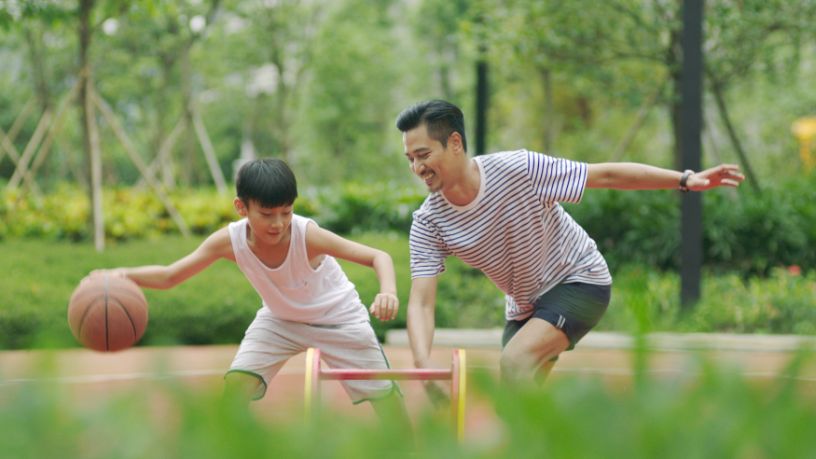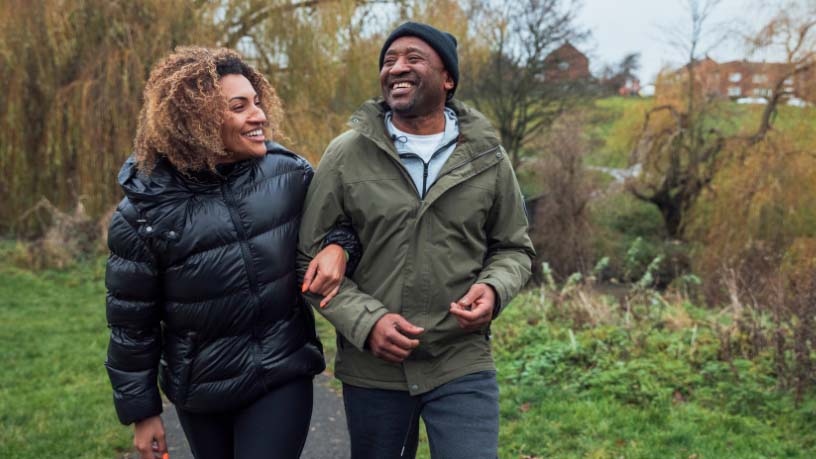Understand the basics of how your anterior cruciate ligament (ACL) works.
On this page
Key takeaways
ACL injuries can range from partial tears to detachment of the ligament.
There are several different treatment and recovery options available.
If you’re a sports lover, there’s a good chance you’ve heard about anterior cruciate ligament (ACL) injuries.
It can be painful and scary to injure your ACL, so knowing the next steps may help.
What's an ACL?
Your ACL is one of the cruciate ligaments (the tough bands of tissue) inside your knee that’s responsible for stabilising the joint and connecting your thigh bone to the front of your shin bone.
It’s responsible for preventing your thigh and shin bones from moving out of place, which is very important when you’re running, jumping or changing directions.
What happens when you injure your ACL?
An ACL injury can be a partial or a complete tear, an overstretch or a detachment of the ligament.
Injuries are assessed based on their severity, and around half the people who injure their ACL also injure another part of their knee, such as a meniscal tear.1
Signs that you may have injured your ACL include:
- a popping sound in your knee
- extreme pain in your knee that prevents you from putting weight on it or continuing physical activity
- significant knee swelling within a few hours of the injury
- black-and-blue discolouration around the knee
- knee instability and/or lacking your full range of movement.
Most ACL injuries happen when playing sports, especially AFL, rugby, soccer, netball, basketball, gymnastics and skiing.2 An ACL injury can be caused by things like:
- landing awkwardly from a jump
- twisting movements, particularly when your foot is on the ground
- quickly changing direction when you’re running or walking
- colliding with another player during a contact sport
- slowing down or stopping suddenly when you’re running.
Visit a doctor if you think you’ve injured your ACL.
How are ACL injuries treated?
Treatment will depend on the severity of the ACL damage, plus how active you are. Treatment options are usually recommended by a sports doctor, physiotherapist or orthopaedic (bone) surgeon (if surgery is required).
The first step following an ACL injury, however, is always to manage your pain and swelling. Here, you should follow the ‘RICE’ procedure: Rest, ice, compress and elevate.
Moreover, for the first 3 days after an injury you should avoid certain things that might further damage your knee. These can be remembered as ‘HARM’: avoiding heat, alcohol, running and massage.
If you have difficulty bearing weight on your knee, you may need crutches or a brace to temporarily support you.
Bupa Health Programs
Discover our programs designed to help you recover and stay out of hospital where you can.
Medication
ACL injuries can be very painful and over-the-counter painkillers like paracetamol or ibuprofen may help treat mild to moderate pain. If the pain is severe, your doctor may discuss stronger prescribed options.
As well as easing pain, non-steroidal anti-inflammatory drugs (NSAIDs) like ibuprofen can also help to reduce inflammation and swelling.
Physiotherapy
A physiotherapist will most likely recommend a rehabilitation program to aid your ACL recovery. This will aim at helping your knee recover its full range of movement, including its strength, stability and normal function.
Your physiotherapist will carefully assess your knee, then plan rehabilitation exercises based on your individual needs and best chance of recovery.
Surgery
The success of recovering from an ACL injury without surgery varies from person to person, and usually depends on things like your level of physical activity and the severity of the injury. Surgery may be the best option if you’re highly active or have a physically demanding job.
Some people prefer to try physiotherapy rehabilitation before considering surgery. Your doctor most likely won’t recommend surgery immediately after an injury, as it’s best to wait around 2 weeks to allow swelling in your knee to reduce first.
Complete ACL ruptures usually require surgical intervention, but a partially torn ACL may not. Surgery is also usually advised when ACL injuries are combined with another knee injury, such as a meniscal tear.
If you do require surgery, your injured ACL will most likely be reconstructed with a tissue graft, which acts as scaffolding for a new ligament to grow on.
Recovery typically takes between 6 to 12 months, and usually includes an intense and lengthy period of physiotherapy.
Make sure you ask your doctor about the pros and cons of surgery before pursuing an operation.
Resources
The Australian Physiotherapy Association can help you find a physio near you.
Chronic Pain Australia provides education and support for those living with chronic pain.
Musculoskeletal Health Australia provides information and support for people living with arthritis and musculoskeletal conditions. Visit their website or call them on 1800 263 265.

At Bupa, trust is everything
Our health and wellbeing information is regularly reviewed and maintained by a team of healthcare experts, to ensure its relevancy and accuracy. Everyone's health journey is unique and health outcomes vary from person to person.
This content is not a replacement for personalised and specific medical, healthcare, or other professional advice. If you have concerns about your health, see your doctor or other health professional.
1Alaia, M. J. (2022). ACL Injury: Does It Require Surgery?. American Academy of Orthopaedic Surgeons.
2Arthritis Australia, et al. (2017). Submission to the consultation to develop a National Sports Plan. Arthritis Australia.
You might also like...
Knee injuries: Understanding meniscal tears
A meniscal tear can require different treatment, medication and recovery options. Find out which ones might be right for you.
What happens after an ACL injury?
An ACL injury can be painful, and may require medication, physiotherapy and even surgery. Get to know your options.
7 things I wish I knew before knee surgery
Knee surgery is a major operation that may require months of intensive recovery. Discover 7 common insights from those who’ve done it.
5 best exercises to strengthen your knee after surgery
If you’ve had knee surgery, support your recovery with these 5 physiotherapist-approved exercises. Regain strength and mobility safely at home.





